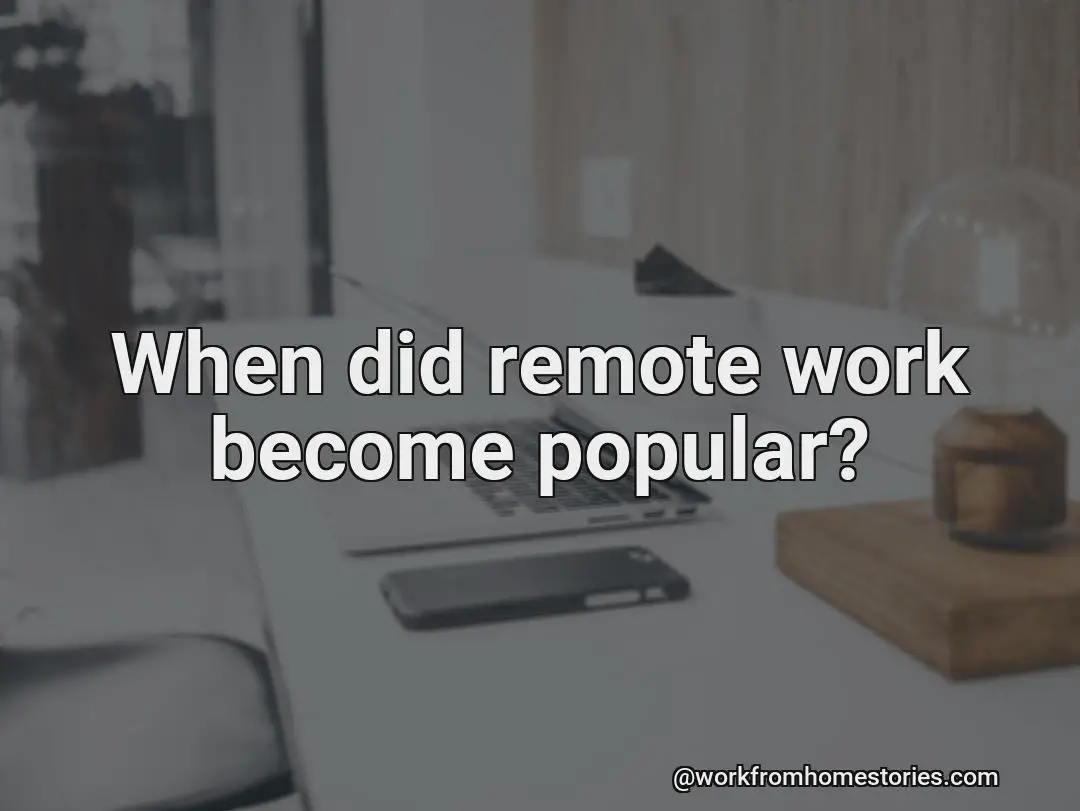How came remote working into being?

Remote work in the upswing between 20 people working at least one day at home per week increased by more than 4 million35. The population of occasional remote workers went from 9.2 million to 13.4 million during this decade. 5. Remote work is a good fit for many people: A new analysis of the Global Work and Life Survey found that “in the U.S., as many as half of people who work from home do so regularly, if not full-time.”
- The rise of remote work is tied to the rise of the gig economy and independent work: According to the Freelancers Union, the number of freelancing Americans has increased by more than a third since 2005, and the number of people working for themselves has increased by nearly half.
How long has virtual work been going on?
Where It Started: A History of Telework. Before skype and zoom in 1973 a nasa engineer by the name of jack nilles laid the foundation for modern remote working when he coined the term telecommuting. Nilles was working from home one day when he had a realization: the tools he was using were the same as those used by NASA to communicate with astronauts in space. He used a telephone and a modem to share his screen with his colleagues at work.
“The idea was you could work from home and the same technology was used in space,” Nilles told Business Insider. “It was just a matter of time before we had it here on earth.”
Nilles' idea is what led to the modern practice of teleworking today, which has been adopted by more than 1.
Why is remote working growing in popularity?
Flexibility
The workers today demand flexibility. Millennials want to travel and work while a parent with 3 children may want to work from home twice a week. Remote work affords people the option to tailor their work hours in accordance with their lifestyle - not the other way around. Achieve Greatness Through
Work From Home & Travel
Remote work allows you to set your own schedule. Whether it’s working from home a couple days a week, or going on a 3 week vacation, we allow you to work from wherever you want.
How It Works
We have created a
Did anyone in the 80s work from home?
Companies test the waters of telecommuting in the 1980s
In June of 1987, the Christian Science Monitor wrote, “Telecommuting: Reality Sets In,” where it says about 1.5 million Americans were telecommuters and about 300 companies ran telecommuting programs. The article goes on to say that companies were finding that “telecommuting can boost productivity and cut costs, and that it’s also a more humane way to run an office.”
The article also cites the example of a company in the Midwest that has a telecommuting program and reports that the company said “the number of people who work at home has increased from about 100 to more than 900.” The article says that the company “has found that productivity and morale has increased and the cost of operating the telecommuting program is only about 10 percent of what it would have been had the employees been in the office.
What percentage of the workforce will be remote to 2022?
Due to the covid-19 pandemic remote work is now more widespread than ever. By 2022 26 of all americans working remotely are doing so four times the numbers worked remotely before. Up to 362 million americans could work remotely by 2025. As the workforce becomes more remote, remote workers will need to find new ways to work, collaborate, and learn. Many of them are turning to video conferencing and other tools to help them do so.
Here are the top three trends in video conferencing tools that will help remote workers:
A New Wave of Video Conferencing Tools
Video conferencing tools are a major part of the remote work experience. They are how many remote workers communicate with their colleagues, and they are how they collaborate with coworkers.
The technology has evolved over the last decade. In the past, video conferencing
When was hybrid working?
In some companies this combination will be all those tailored to individual. Hybrid working started long before the pandemic with flexible working and teleworking getting popularity first in the 70s with the emergence of personal computers and then in the 1990s with the internet. Now with the pandemic and the economic crisis, companies are looking to the future and considering how to create a new way of working.
The idea of working from home is nothing new. Many of us have had the experience of working from home in our personal lives. What is new is the idea of working from home as a business model. The concept of working from home has been around for a long time, but companies like Google, Facebook, Twitter, and Zoom are now making it a reality.
When did remote work begin?
1973
Where It Started: A History of Telework. Before skype and zoom in 1973 a nasa engineer by the name of jack nilles laid the foundation for modern remote working when he coined the term telecommuting. Here is what he had to say:
The phrase “telecommuting” was coined in 1973, when I was working for the Jet Propulsion Laboratory on interplanetary trajectories. The original idea was that I was going to work from home, but I soon found that it was pretty inconvenient to do so. After all, I couldn’t just close my door and forget about my job. So I worked at the home office, and my neighbors worked at the office, and we all commuted together.
The term “telecommute” was first coined by John Naisbitt. He is widely credited with popularizing the